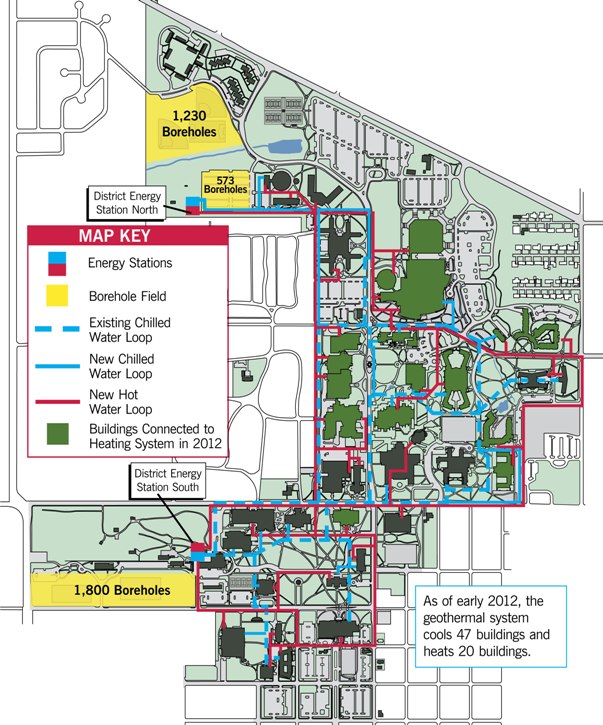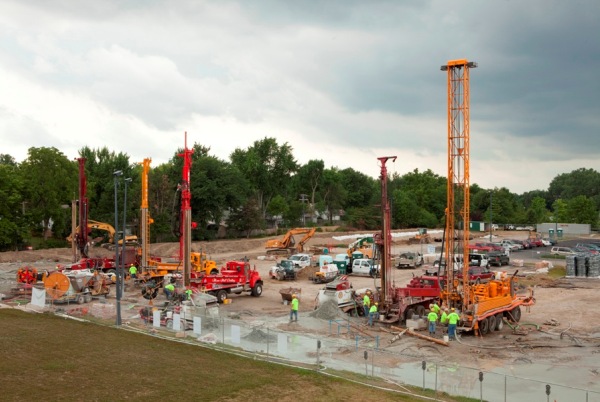Heating and cooling old college buildings can be a very expensive, and environmentally unfriendly, proposition. Ball State University in Indiana, is taking a greener tack though, resulting in the nation’s largest geothermal heating and cooling system. Built using funds from the State of Indiana, the university and a $5 million grant from the U.S. Department of Energy, the system will save the university an estimated $2 million annually in operating costs and cut the university’s carbon footprint in half.
Started in 2009, the geothermal system’s first phase is now up and running, with the second phase already under way. When complete, the ambitious system will heat and cool 47 university buildings, totaling 5.5 million square feet across the 660-acre campus.

To implement the first phase, the university drilled 1,800 boreholes around campus, each 4 to 5 inches in diameter and 400 to 500 feet deep. These holes, and the additional 1,800 needed for phase two, will be completely undercover, topped with parking lots and recreational fields. One thousand miles of piping circulates water in a closed loop system, and facilitates the heat transfer between the ground and the buildings. The separate hot and cold pipe systems eventually pass through heat exchangers and fans that blow either the hot or chilled air into the buildings.
Once complete, the new heating system will allow the university to shut off all four of its coal-fired boilers, saving 85,000 tons of carbon dioxide from entering the atmosphere annually. Funded with American Recovery and Reinvestment Act money, Ball State used almost all made-in-America components and contracted with over 50 Indiana firms to complete the project.
As Ball State University has demonstrated, college campuses and other major facilities which spend a great deal of money heating and cooling buildings in close proximity could benefit greatly from using geothemal heating and cooling as a renewable – and money saving – alternative. With geothermal’s ability to fit a wide variety of needs and locations, we’ve already seen diverse systems implemented at Ohio State University, the Peppermill Resort and Spa in Reno and even at Ikea.

Geothermal energy as a whole has an interesting position domestically right now – it comprises less than a percent of the energy we produce in the U.S., but as a geothermal study commissioned by Google recently revealed, there is potential for oh-so-much-more. According to this study, geothermal could provide over three times the total energy production in the U.S. Geothermal already got a boost from the Department of Energy last fall, with over $100 million in awards to develop and test new ways to utilize geothermal, so we hope to see quite a few projects implemented in the next few years.
The successful Ball State system exemplifies the DOE’s hopes for projects like this, as U.S. Energy Secretary Steven Chu commented, “The President has made clear that we need an all-of-the-above approach to American energy—an approach that uses homegrown and alternative energy sources designed and produced by American workers. That is why the Energy Department is committed to supporting projects like Ball State’s new geothermal system that reduces energy costs, diversifies the university’s energy portfolio, and supports good, local jobs.”